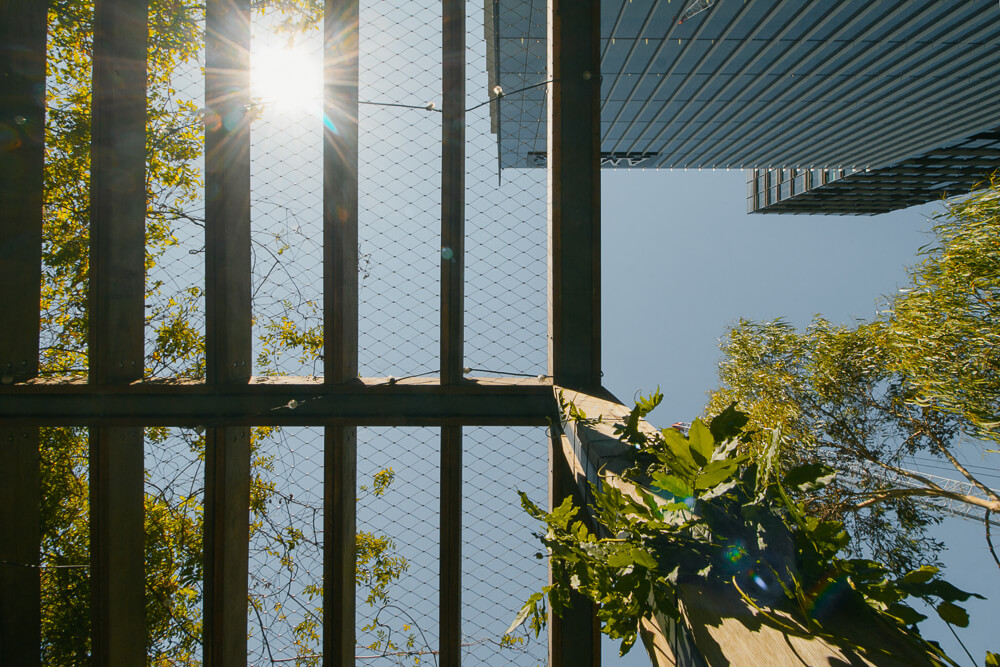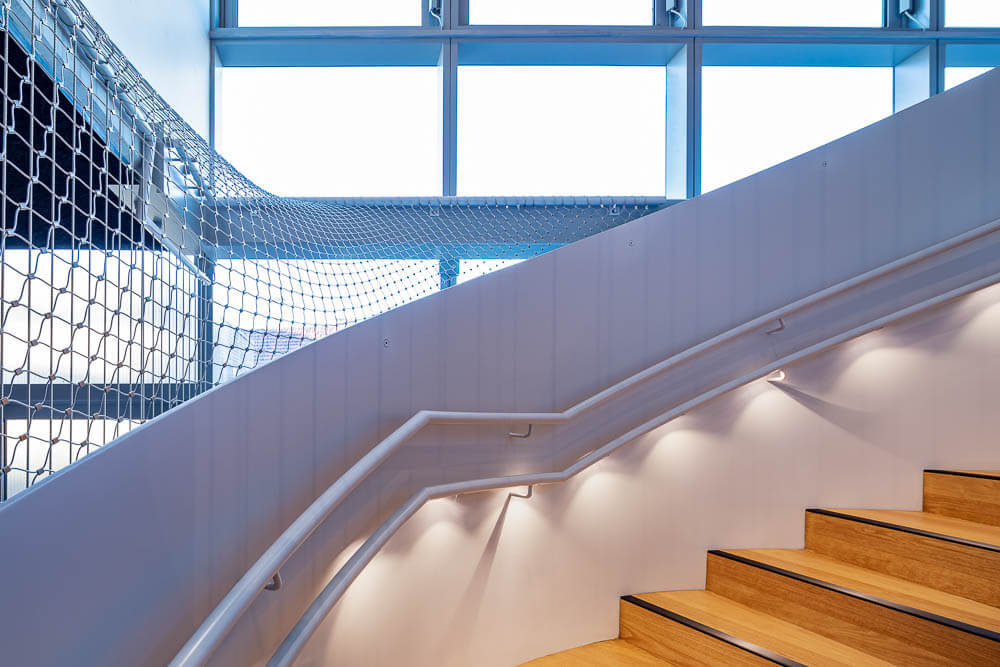It might look like regular security mesh at first glance, but stainless steel Webnet offers a vast array of applications for protection netting. The possibilities are almost endless!
The material comes in a range of wire rope and aperture sizes and shapes, and it can be stretched, moulded, twisted or even draped much like a piece of fabric.
As well as having properties that make it suitable for all kinds of safety netting, Webnet is also highly transparent, so it won’t block light, airflow or views. Nor will it dominate your structure’s design or appearance.
Here are some of the ways Webnet can be applied as protection netting.
1. Horizontal safety netting
Bridge fall-nets
Under-bridge nets made from Webnet can save lives! One example is an 800 year-old viaduct in Germany, where safety nets were installed to prevent falls and suicides. The netting is also invisible enough to not spoil or interfere with the historic appearance of the structure.
Helipad nets
Strong winds can sometimes cause problems for helicopters when taking off from elevated landing platforms. Webnet can be used to make protection nets that surround helipads and reduce the risk of falls.
Catching nets
Webnet can be formed into large protection nets against falling objects, often without the need for additional supporting cables.
2. Vertical protection netting
Atriums
Webnet is ideal for creating a transparent atrium barrier that maximises safety. It was used to form the barrier for the five-level atrium at the Melbourne School of Design, protecting against falls while allowing for clear sight lines.
Anti-throw screens
Where a structure such as a footbridge needs an anti-throw screen, Webnet makes a highly versatile solution. A great example is the Christopher Cassaniti bridge in Sydney, a steel helical-shaped pedestrian bridge where the mesh screen twists and turns in line with the bridge’s geometry.
Green barriers
Webnet can be used as a green barrier – offering safety combined with support for climbing plants. An example is the elevated Skypark in Melbourne.

Residential safety nets
Webnet was used for the staircases, balcony and window screens at Acute House – a tiny heritage house renovation in Melbourne. The screens meet safety requirements while allowing for greater natural light and sense of interior space.
Multi-level carparks
There are many examples of the use of Webnet protection netting for carparks. The material is ideal as it is very quick to install and low maintenance. It can also double up as a green or artistic facade support – or both together, as seen at the Advanx East Apartment carpark in Sydney.
3. Other protection netting applications
Webnet can also be used to:
- Wrap heritage structures, such as statues or other historic monuments or buildings, while allowing for free viewing from the public.
- Protect sensitive equipment – such as electrical equipment, lighting and sound systems.
- Form spiral staircase screens – as at the RFW Children’s Charity building in Sydney, where Webnet was formed into a kind of corkscrew shape (an Australian first!) to protect children against falls on the spiral stairs.
The sky is pretty much the limit for Webnet protection netting! Get in touch with our team to discuss your next project.







































